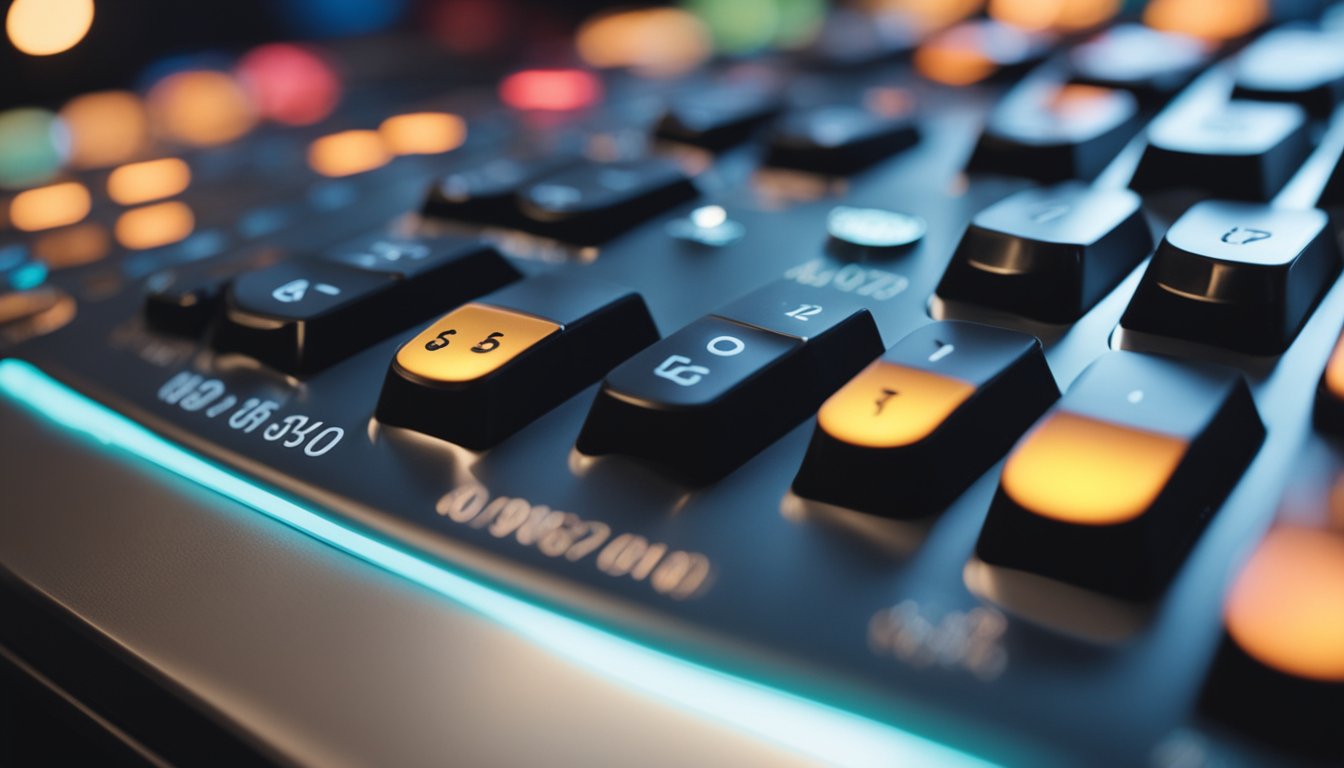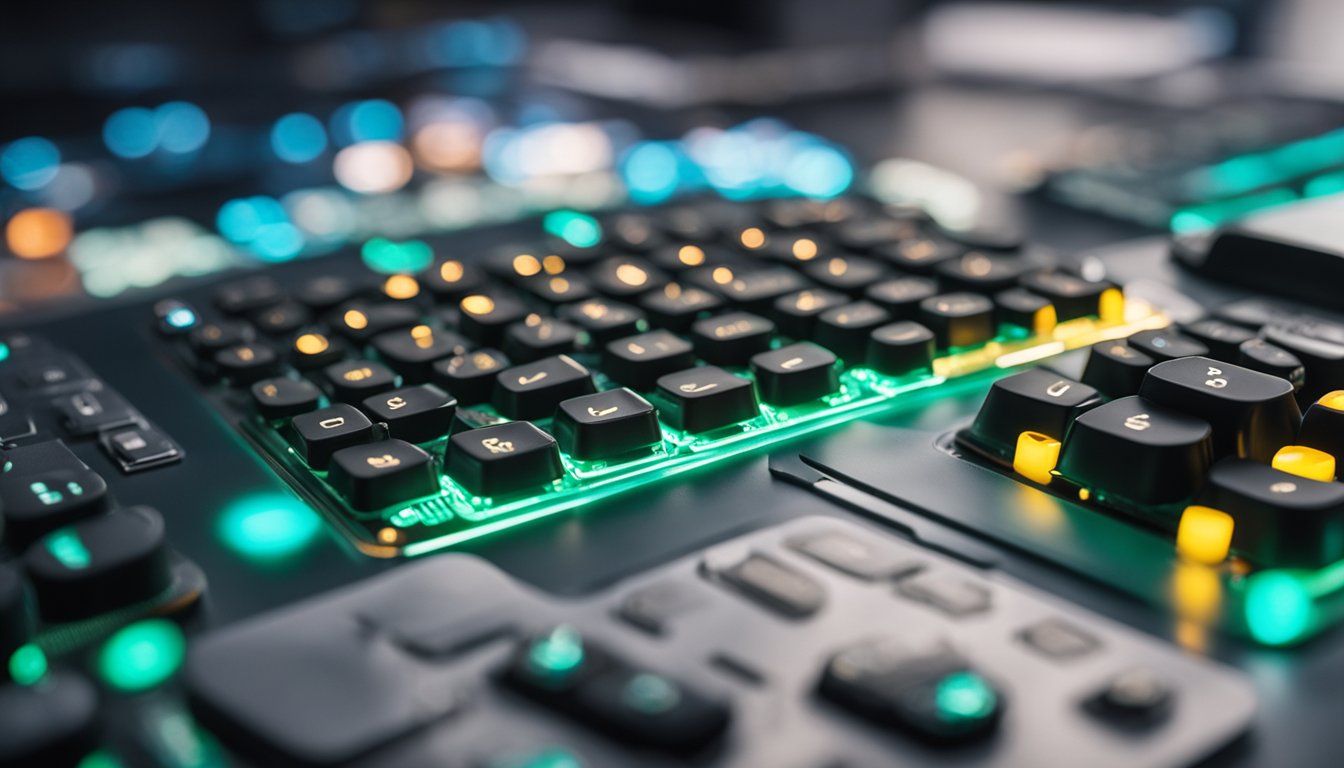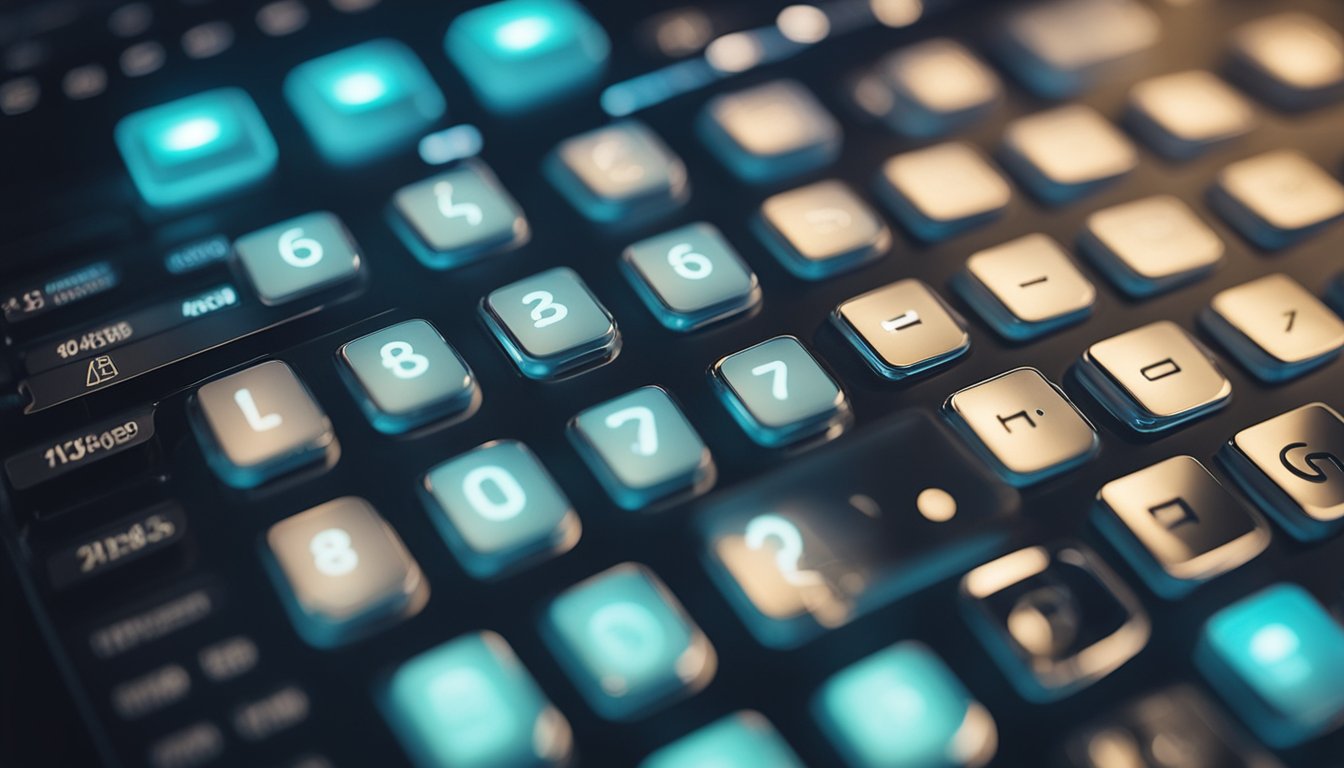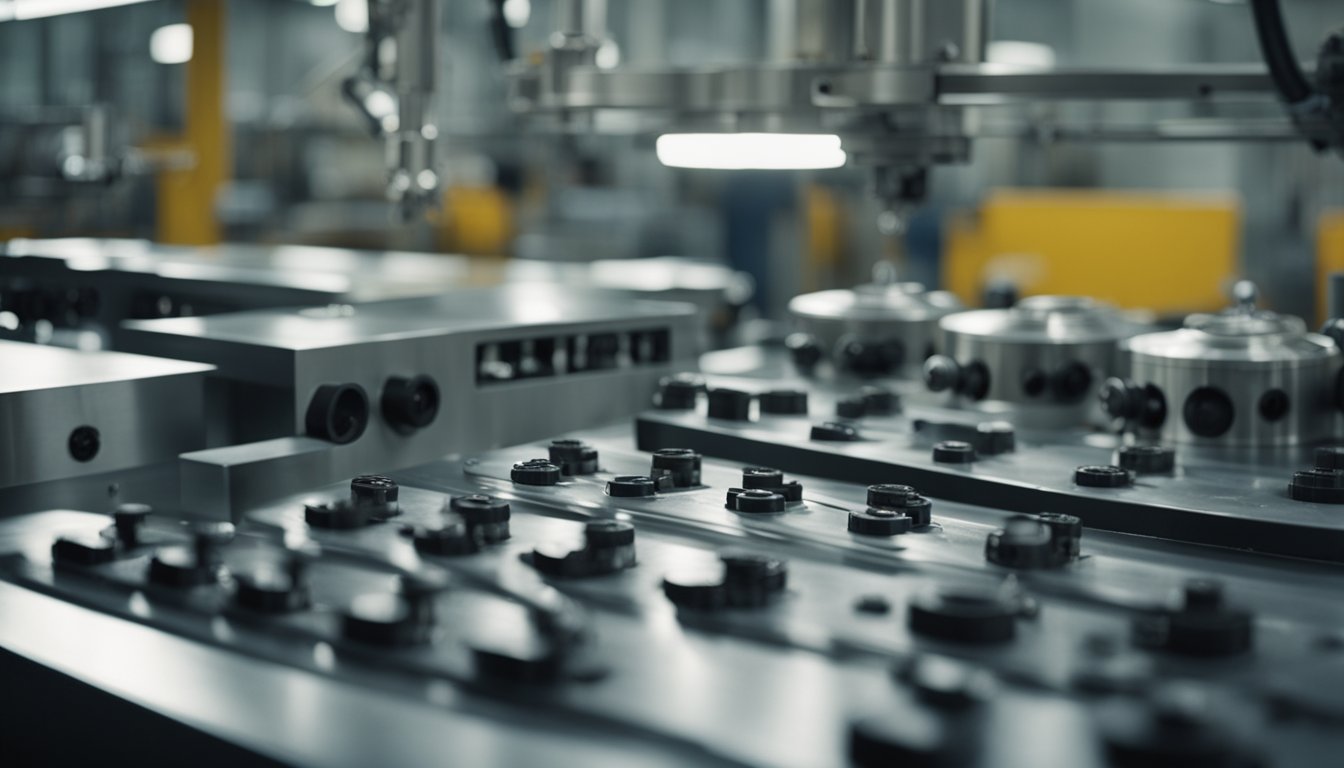Contact
Write to Us And We Would Be Happy to Advise You.
Do you have any questions, or would you like to speak directly with a representative?
By peter
Custom keypad membrane is an essential component of modern electronic devices, providing an intuitive interface for users to interact with machines. Membrane keypads have revolutionized user interaction with electronic devices by using a thin, flexible membrane layer to detect and process inputs, in contrast to their mechanical equivalents. They are widely used in various industries and applications, from medical devices to industrial controls, and from consumer electronics to military equipment.

Custom keypad membranes are designed to meet specific user requirements, ranging from simple button layouts to complex multi-layer designs with backlighting, tactile feedback, and graphic overlays. Design considerations for custom keypad membranes include the choice of materials, the layout of the circuitry, the type of switches, the sealing method, and the aesthetic appearance. Manufacturing processes for custom keypad membranes include screen printing, digital printing, laser cutting, laminating, and assembly.
Key Takeaways:

Custom keypad membranes are an essential component of modern electronic devices that require user input functionality. They are thin, flexible, and durable, making them ideal for use in a wide range of applications, from medical devices to consumer electronics.
A custom keypad membrane consists of several layers of materials, including a graphic overlay, adhesive spacer, and circuit layer. The graphic overlay is the top layer of the keypad that contains the printed or embossed keys. It is made of materials such as polyester, polycarbonate, or acrylic, which are durable and can withstand harsh environments.
The adhesive spacer is a layer of material that separates the graphic overlay from the circuit layer. It is typically made of materials such as polyester or polyethylene foam and is used to provide a cushioning effect to the keypad.
The circuit layer is the bottom layer of the keypad that contains the electrical circuitry. It is made of materials such as polyester or polycarbonate and contains the conductive traces that connect the keys to the device’s electronics.
Custom keypad membranes work by using a pressure-sensitive mechanism to detect and process user inputs. When a user presses a key on the keypad, the overlay deforms, allowing the contact on the membrane to make contact with the circuit layer, completing the electrical circuit.
Custom keypad membranes can be designed to meet specific requirements, including the number of keys, key size, key shape, and tactile response. They can also be customized to include additional features such as backlighting, embossing, and printing.
In summary, custom keypad membranes are an essential component of modern electronic devices that require user input functionality. They are made of several layers of materials, including a graphic overlay, adhesive spacer, and circuit layer. Custom keypad membranes work by using a pressure-sensitive mechanism to detect and process user inputs, and they can be customized to meet specific requirements.

When designing a custom membrane keypad, there are several factors to consider to ensure that the keypad meets the needs of the end-user. Two important considerations are material selection and electrical layout.
The material selection for a custom membrane keypad is crucial to its functionality and durability. The keypad should be designed to withstand the environment in which it will be used. For example, if the keypad will be used in an industrial environment, it should be able to withstand exposure to dust, water, and other harsh conditions.
The most common materials used for custom membrane keypads are polyester, polycarbonate, and silicone rubber. Polyester and polycarbonate are both durable and can withstand harsh environments. Silicone rubber is known for its flexibility and resistance to extreme temperatures.
When selecting a material for your custom membrane keypad, it’s important to consider the specific needs of your application. You should also consider the appearance of the keypad, as the material you choose can affect its look and feel.
The electrical layout of a custom membrane keypad is another important consideration. The layout should be designed to ensure that the keypad is easy to use and that it meets the needs of the end-user.
The electrical layout of a custom membrane keypad consists of the circuitry and the switches. The circuitry is the conductive material that connects the switches to the control system. The switches are the buttons that are pressed to activate the circuitry.
When designing the electrical layout of your custom membrane keypad, you should consider the number and placement of the switches, as well as the spacing between them. The switches should be placed in a way that makes them easy to use and that minimizes the risk of accidental activation.
Another important consideration when designing the electrical layout of your custom membrane keypad is the type of switch you choose. There are several types of switches available, including tactile switches, non-tactile switches, and capacitive switches. Each type of switch has its own advantages and disadvantages, so it’s important to choose the one that best meets the needs of your application.
By considering material selection and electrical layout, you can design a custom membrane keypad that meets the needs of your end-users and performs well in its intended environment.

When it comes to manufacturing custom membrane keypads, several processes are involved. These processes ensure the production of high-quality keypads that meet the client’s specifications. In this section, we will discuss two critical manufacturing processes involved in creating custom membrane keypads: Printing Techniques and Cutting and Shaping.
Printing techniques are a crucial part of the manufacturing process for custom membrane keypads. The printing process involves printing the graphic overlay on the top layer of the keypad. The graphic overlay is the top layer of the keypad that contains the symbols, letters, and numbers that users press to activate the switch.
Screen printing is the most common printing technique used in the manufacture of custom membrane keypads. This technique involves applying ink to the graphic overlay through a stencil-like mesh. Screen printing is preferred because of its high-quality output, durability, and the ability to print on various materials.
Cutting and shaping are the processes involved in creating the individual layers of the membrane keypad. The process starts with the creation of the base layer, which is usually made of polyester. The base layer is then coated with a conductive material, such as silver, which is used to create the circuitry.
The layers are then cut and shaped according to the client’s specifications. The cutting is done using a die-cutting machine, which cuts the layers to the desired shape and size. The layers are then stacked on top of each other, and the adhesive is applied to hold them in place.
In conclusion, the manufacturing process of custom membrane keypads involves several processes, including printing techniques and cutting and shaping. These processes ensure the production of high-quality keypads that meet the client’s specifications.
When it comes to customizing a membrane keypad, there are several options to choose from. Here are two common customization options that can help improve the functionality and usability of your keypad.
A graphic overlay is a layer of material that sits on top of the membrane keypad. It can be customized with different colors, designs, and logos to match the aesthetics of your product. Graphic overlays not only add visual appeal to your keypad, but they also protect the keypad from wear and tear, making it more durable.
When creating a graphic overlay, it’s important to consider the environment in which your product will be used. For example, if your product will be used in an outdoor setting, you may want to use materials that are UV resistant to prevent fading. Similarly, if your product will be used in a medical setting, you may want to use materials that are easy to clean and disinfect.
Tactile feedback refers to the physical response that a user feels when they press a button on a membrane keypad. Customizing the tactile feedback can help improve the user experience and make the keypad more intuitive to use.
There are several ways to customize the tactile feedback of a membrane keypad. One way is to adjust the actuation force, which is the amount of pressure required to activate a button. Another way is to adjust the travel distance, which is the distance a button travels when it is pressed. By customizing the actuation force and travel distance, you can create a keypad that is tailored to the needs of your users.
In addition to actuation force and travel distance, you can also customize the tactile feedback by adding different types of domes or springs to the keypad. These components can help create a more satisfying tactile response and make the keypad more comfortable to use.
Overall, customizing a membrane keypad can help improve the functionality, usability, and aesthetics of your product. By considering options such as graphic overlays and tactile feedback, you can create a keypad that is tailored to the needs of your users and enhances the overall user experience.
Custom membrane keypads have a wide range of applications and uses across various industries. These keypads are used in electronic devices to provide a user interface for controlling and interacting with the device. Here are some common applications and uses of custom membrane keypads:
Custom membrane keypads are commonly used in industrial controls and automation systems. They are designed to withstand harsh environments and provide reliable operation even in extreme conditions. These keypads are used in equipment such as machinery control panels, industrial control systems, and process control equipment. They are ideal for applications where the control panel needs to be sealed against dust, dirt, and moisture.
Custom membrane keypads are also widely used in consumer electronics such as remote controls, home appliances, and medical devices. These keypads are designed to be lightweight, compact, and easy to use. They are often used in devices where space is limited, and the user interface needs to be simple and intuitive. Custom membrane keypads are also used in medical devices such as blood glucose meters and insulin pumps, where precision and accuracy are critical.
Custom membrane keypads are also used in automotive applications such as dashboard controls, navigation systems, and entertainment systems. They are designed to be durable and reliable, even in harsh environments such as high temperatures and humidity.
Overall, custom membrane keypads are an essential component of many electronic devices, providing a reliable and intuitive user interface. They are ideal for applications where space is limited, and the control panel needs to be sealed against dust, dirt, and moisture.
Do you have any questions, or would you like to speak directly with a representative?